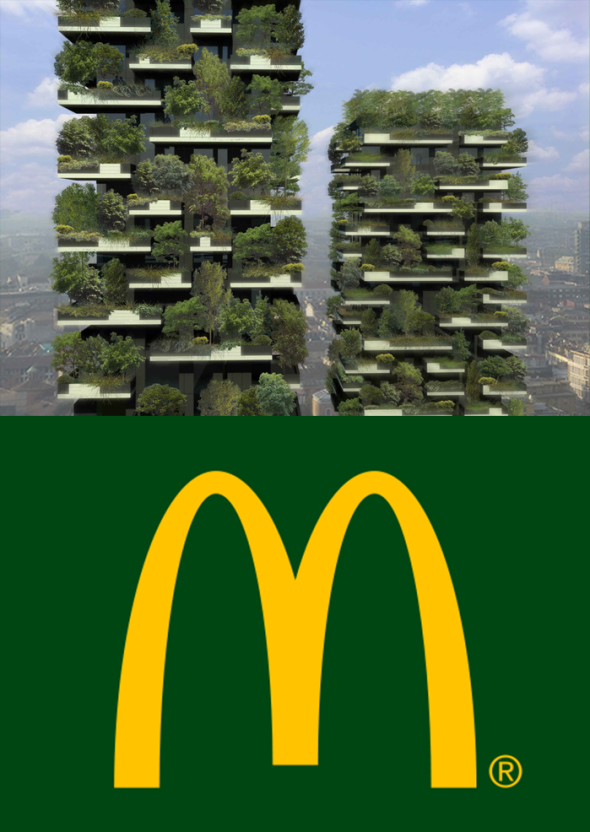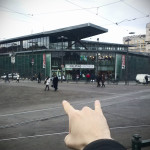The Critic as Sparring Partner
massa critica | davide tommaso ferrando
This is the third and last chapter (read the first and second) of my essay on Architecture Criticism in the Age of Social Networks, which I presented in the frame of the critic|all conference (ETSA Madrid, June 2014), and am now publishing in a web-friendly edition on OII+. Of the three parts, this is the most optimistic and, for this very reason, the one that now needs more reconsideration, as it postulates a simplification of the relationship between architects and critics, which can take many more forms than the three discussed, also due to the fact that architecture criticism itself, as a kind of work, is now going through deep transformations. At the same time, here I somehow propose that all architecture critics should learn how to communicate on the web and social media, and although I still see this as an important and urgent task, I am not any more so radical about it, as I prefer to see the phenomenon in terms of “biodiversity”: what is important to me, in other words, is that all media read by architects be occupied by consistent critical discourses. DTF
 The Wild Bunch
The Wild Bunch
In the Nineties, Ignasi de Solà-Morales described the relationship between critics and architects as one of sadomasochism1, with the former controlling their anxiety for the recent collapse of grand narratives by exercising a «compensatory aggressiveness» towards the latter, who resignedly offered their projects to «the lashes of their chastisers» with the hope that non-evident meaning would eventually become manifest. Two decades later, this relationship has been largely turned upside-down, with many architects now dictating case-by-case the keys for the interpretation of their projects, and many critics cunningly reducing their role to that of observers of the architectural market and promoters of its top products. Under the destabilizing effects of postmodern relativism, ideological conflict has been replaced by pragmatic partnership, legitimately leading to a loss of confidence in critique itself. But was conflict a better alternative?
According to common interpretations of the idea of “criticism”, it probably was. In its main acceptations – as a profession, as a set of social practices, or as a disciplinary discourse – the term “criticism” is normally used to indicate a set of intellectual activities traditionally placed outside of (and possibly against) the domain of architectural production, being what separates critics from architects precisely «what can ensure – in Luigi Manzione’s words – a margin of efficiency in critical discourse»2. The presumed necessity of a contraposition between architects and critics is what has allowed Valerio Paolo Mosco to postulate, quoting Alfonso Berardinelli, that a critic should not be a sociable man but rather a misanthrope, being that «an excess in sociability would make him lose the critical distance upon which his autonomy of judgement depends»3.
 The Salesmen – Gehry!
The Salesmen – Gehry!
Although Manzione and Mosco make a point, I would like to stress how the two given options (the critic as “manager” or the critic as “chastiser”) are the product of a common and problematic way of intending the cultural role of the architect, which is usually – and erroneously – taken for granted. Looking back at the last hundred years, one can imagine that History will remember the XX century, among other things, not only for the production of a new genre of architecture, but also for the creation of a new model of architect, dangerously capable (I’m simplifying) of bringing together the messianic impetus of the 1920s with the cynic relativism of the 1980s and the communicative attitude of present times. Under the «influential and aggressive pressures of […] business, marketing, fashion, mass media, spectacle and advertising»4, architects have become public figures imbued with a strong communicative power, thanks to a perceived aura of creativity and success that makes them the perfect ambassadors of corporate marketing strategies – on condition that their authority is not questioned, of course. What’s more, in the last decades journalists have developed the curious tendency to address certain architectures with the names of their authors – “a Gehry”, “a Libeskind”, “a Foster” –, implying the existence of some sort of coincidence between the two entities, and therefore suggesting that criticizing a piece of architecture is equivalent to criticizing the architect who has conceived it – although author and oeuvre should better stay separated in the critic’s and architect’s mind.
Such (commonly accepted) distortions of the collective perception of architects and architecture are having important consequences on the way in which criticism is endured, which are summarized by Kieran Long’s claim that «A true critic is the unwelcome guest at a party of architects»5. I believe, nevertheless, that the establishment of a different kind of relationship between architects and critics is desirable, especially because neither of today’s main critical attitudes – the supportive and the mischievous one – are useful in terms of the progress of architecture. I am indeed convinced that critics, to use a tennis metaphor, should play neither with nor against architects: they should rather be their “sparring partners”.
 Greenwashing [you’re lovin’ it]
Greenwashing [you’re lovin’ it]
Until proved otherwise, in fact, the ultimate task of criticism is to ensure that architects build better buildings and cities (otherwise what is criticism good for? Making charts?). We can therefore presume that critics, in virtue of the skills acquired with the study of history and theory, are called to perform a task that is useful to both architects and architecture, which synthetically consists in a mix of “ex-post specific criticism” – critical reviews of built works that are meant, in Joseph Rykwert words, «to separate the grain from the chaff»6 – and “ex-ante generic criticism” – publications, exhibitions, lectures (etc.) that serve to enrich the architects’ imagination, references and critical though. Moreover, I believe that the existence of an “ex-ante specific criticism” – a constant and productive dialogue between architects and critics to be held before, during and after the design phase –, mainly depends on the perception that the former have of the latter: the more objective and positive the critics’ judgements, the more interesting and useful (and therefore welcomed) they should be for the architects. It is for this reason that I don’t agree with Valerio Paolo Mosco when he says that the critic is “a misanthrope” by definition: on the contrary, I like to imagine a type of critic (the type I am actually trying to be) who is instead such a good friend of architects that he finds it perfectly natural to express negative judgements on their works.
However, if critics want to interact fruitfully with architects, they have to speak their language and adopt their communication channels. In this sense, it is pretty clear to me that the distance that often separates designers and critics is not just the result of the current crisis of architecture criticism: it also depends on the distance that separates today’s critics from current media. While more and more people post videos and pictures on Instagram, share images on Pinterest, Facebook and Tumblr, resume books and comment lectures on Twitter, too many critics still believe that the only way to do their job is by publishing on books and paper magazines long and boring texts like this one – texts that are usually read by professors, critics, historians and a few students, and that therefore remain, neutralized, on the sidelines of actual architectural production.
 The Queen of Biennali?
The Queen of Biennali?
The fact that Allison Arieff has compared reading architectural writings to having a tooth extracted7 is quite explicative of the way in which many critics work nowadays: little concerned about the use that architects will do of their ideas, they write for no-one except for themselves, locking critical discourse in a cage of autonomy from which no real influence on architectural production can be exercised. Critique for critique’s sake (both in its conflictual and peaceful version) tragically reflects a retreat from reality that seems even more problematic if we consider how many opportunities for elaborating alternative ways of communication are offered today by digital media. It is for this reason that, in this precise historical period, the worst mistake a critic may commit is that of not being interested in propagating his own ideas outside strictly literary and academic circles, given that architecture criticism is not supposed to be an autonomous linguistic activity, but a collective service aimed at interacting with a public space of debate.
Davide Tommaso Ferrando
Notes:
1. DE SOLÀ-MORALES. Differences. Topographies of Contemporary Architecture. The MIT Press, London/Cambridge, 1997, pp. 139-143.
2. MANZIONE, Luigi. For an architectural critique beyond entertainment. In “Le Visiteur” n. 11, 2008.
3. MOSCO, Valerio Paolo. Punto e a capo per la critica in Italia (n.2). In “Zeroundicipiù”, 19 July 2013.
4. LO RICCO, Gabriella, MICHELI, Silvia. Lo spettacolo dell’architettura. Profilo dell’archistar©. Bruno Mondadori, Milano, 2003, VII.
5. LONG, Kieran. We cannot absolve ourselves of responsibility for the implications of a project. In “Dezeen”, 1 March 2014.
6. See PALLISTER, James. Property prices are “castrating the whole notion of city life”. In “Dezeen”, 24 February 2014.
7. ARIEFF, Allison. Why don’t we read about architecture? In “The New York Times”, 2 March 2012.
Related Posts
Questo sito usa Akismet per ridurre lo spam. Scopri come i tuoi dati vengono elaborati.








Lascia un commento